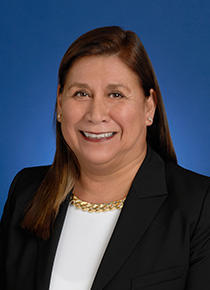August 31, 2021

Dear OADN Members:
As America’s population becomes increasingly more diverse, we must strengthen our efforts to recruit and retain a more diverse student and faculty presence within the nursing profession. Higher education is the pipeline to having a diverse nursing workforce in the United States. In this message, I would like to focus specifically on Hispanic/Latinx registered nurses, as Hispanic/Latinx nurses have traditionally entered the profession through the associate degree pipeline.
According to the CDC, the two leading causes of death for the Hispanic/Latinx population are heart disease and cancer. Also, Hispanics/Latinx have more deaths from diabetes and chronic liver disease and similar numbers of deaths from kidney diseases compared to the general U.S. population. Further, health risks can vary by Hispanic/Latinx subgroup: for example, 66% more Puerto Ricans smoke than Mexicans. Additionally, this demographic is almost three times as likely to be uninsured compared to white Americans. While these health disparities persist, age is an interesting and potentially promising factor for the Hispanic/Latinx population in the U.S. On average, Hispanic/Latinx people are nearly 15 years younger compared with white Americans. This provides an excellent opportunity for the nursing profession to offer patient education on disease prevention for their Hispanic/Latinx patients. It is also well documented that health outcomes improve when patients and their families receive care from health care professionals who share their racial or ethnic backgrounds (Healthy People 2030, 2020).
Studies show that Hispanic/Latinx nurses do make a difference in the health care of Hispanic/Latinx patients. Because of their understanding of Hispanic/Latinx culture, language, and health practices, they experience this powerful connection with their patients and their families. Accordingly, these nurses are well-positioned to help reduce disparities since nursing emphasizes holistic care, health promotion, and disease prevention (Woodley & Lewallen, 2020). The new NAM Future of Nursing report (2021) also recommended a diverse healthcare workforce to improve health outcomes and achieve health equity. It states that nursing schools need to recruit intentionally, support, and mentor faculty and students from diverse backgrounds to ensure that the next generation of nurses reflects the communities it serves.
In 2019, ADN nursing programs graduated 10,775 Hispanic/Latinx registered nurses, the highest number reported from all nursing programs, according to the Integrated Postsecondary Education Data System (IPEDS) (Institute for Health Policy Studies UCSF and the Future of Nursing: Campaign for Action, 2020). Yes, this is excellent news. However, we are not there yet, and we need to keep working to increase our numbers of Hispanic/Latinx nurses to help achieve equity in health and health care and reverse the trajectory of poor health status seen in communities across the nation.
Angelica Millan RN, DNP, FAAN
Member, Editorial Board
Teaching and Learning in Nursing